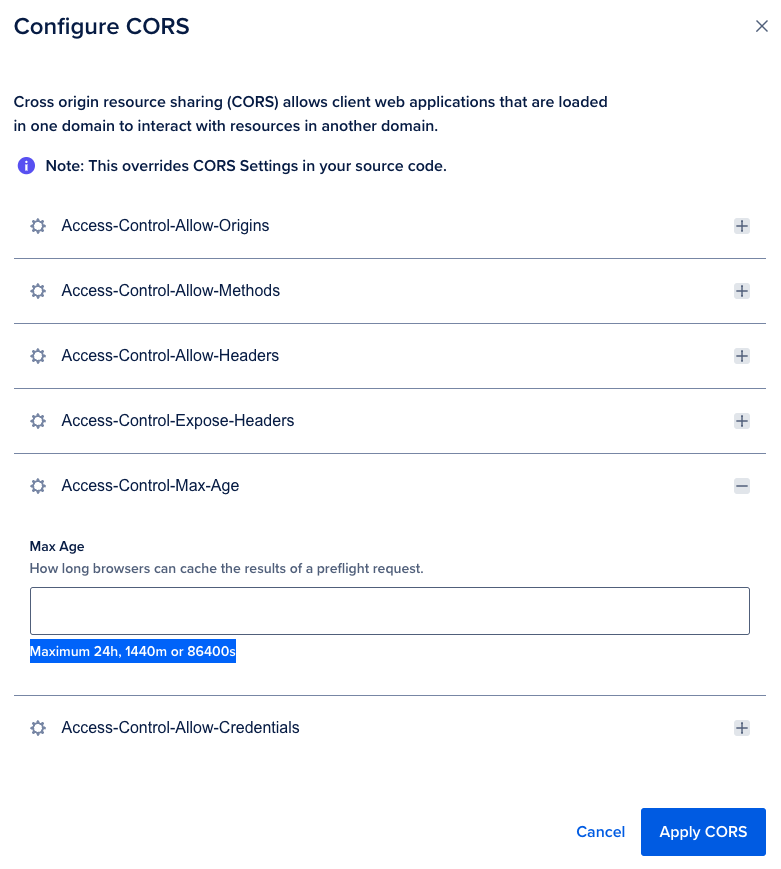How to Configure CORS Policies in App Platform
Validated on 3 May 2021 • Last edited on 18 Dec 2024
App Platform is a Platform-as-a-Service (PaaS) offering that allows developers to publish code directly to DigitalOcean servers without worrying about the underlying infrastructure.
Cross-Origin Resource Sharing (CORS) lets web applications load resources on other origins (usually domains) via HTTP headers. A common use case for CORS is to define how applications in one domain can access applications in another domain. For example, you can set up a CORS policy for api.example.com that only accepts HTTP GET requests from a web application at example.com.
The parameters you set in the CORS policy define how a client HTTP request must be configured for the policy to accept the request. For example, if you set the Access-Control-Allow-Origin header to https://example.com, the client requests must originate from https://example.com with the Origin header set to https://example.com.
To update your app’s CORS settings from the control panel, click your app and then click the Settings tab. From the Settings tab, click the component whose CORS policies you would like to edit. Under the HTTP Routes Redirect header, click Edit and then click Configure CORS.

Editing CORS Policies
In the Configure CORS window, you can specify which parameters an HTTP request must match in order for the CORS policy to be applied. You can specify only the parameters that are relevant for your use case. You do not need to specify all parameters to create a CORS policy.
Access-Control-Allow-Origins
The Access-Control-Allow-Origins section specifies the domains (origins) allowed to access your app. For example, if you set this to https://example.com, your app only allows HTTP requests that originate from https://example.com to access its resources. The value can be specific domains or a regular expression.
- Exact: The app only permits access if the client’s origin exactly matches the value you provide. For example, if you set this to
https://example.com, your app only allows access if an HTTP request originated fromhttps://example.com. - Regex: The app permits access if the client’s origin matches the regex, which must be in RE2 style syntax.
Access-Control-Allow-Methods
The Access-Control-Allow-Methods section specifies the HTTP CRUD methods that the client is allowed to execute. For example, you can set this to GET so that your app only accepts GET requests from matching clients.
Access-Control-Allow-Headers
The Access-Control-Allow-Headers section specifies the HTTP headers that the client is allowed to send. For example, you can set this to Content-Type so that your app only receives requests with the Content-Type header from matching clients.
Access-Control-Expose-Headers
The Access-Control-Expose-Headers section specifies the response headers that must be available to any scripts running in the client. For example, you can set this to Content-Length so that the Content-Length header is made available to any scripts running in the client.
See Mozilla’s documentation for a list of response headers that are safe to expose.
Access-Control-Max-Age
The Access-Control-Max-Age section specifies the number of seconds a client browser should cache the CORS policy. You can specify a maximum of 24h, 1440m or 86400s.
Access-Control-Allow-Credentials
The Access-Control-Allow-Credentials section specifies whether or not your app allows requests that contain cookies, TLS client certificates, or authentication headers containing a username and password.